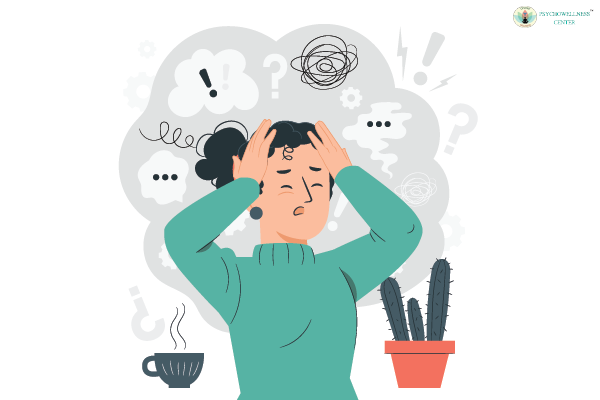"Cross-Dressing" or Transvestic Disorder Counselling

A person has transvestic
disorder when they frequently experience intense sexual pleasure from clothing
as someone who is not their biological gender and their drive to do so
significantly disrupts their daily life. A rare diagnosis known as the transvestic
condition is categorized as a paraphilia or unusual sexual conduct.
Because of their tendency to cross-dress, people with
transvestic disorders may feel depressed, guilty, or ashamed.
These emotions are frequently brought on by their partner's displeasure or
their own anxiety about adverse social or professional consequences.
The majority of cross-dressers do not meet the criteria for
the transvestic disorder. A common motivation for cross-dressing is to
challenge gender expectations.
Because it interferes with their love connections or
marriages to women, the transvestic disorder is one of the most common
conditions for which people seek treatment.
Although transvestism is a sort of paraphilia, most
cross-dressers do not match the clinical requirements for the disease, which
include having fantasies, strong desires, or actions that distress others or
themselves. Additionally, the ailment had to be present for at least six months.
The term "cross-dresser" is more widely used and
accepted than "transvestite." In birth-sex females, transvestism and
cross-dressing are incredibly uncommon.
Male heterosexuals who dress like ladies often start doing
so in their late childhood. Up to 3% of men claim to have cross-dressed and
experienced sexual stimulation as a result at least once, but many less claim
to cross-dress frequently. Cross-dressing is connected to significant sexual
excitement, at least initially.
Cross-dressing-related shame, guilt, and anxiety are transvestic
disorder symptoms. Wearing only one item of clothing normally associated with
the other gender or an entire ensemble, together with hair and makeup, is known
as cross-dressing. According to the DSM-5, a person must experience ongoing and
intense sexual arousal from thinking about or acting upon, urges to wear one
or more items of clothing typically worn by the opposite gender in order to be
diagnosed with the transvestic disorder. The individual must experience
considerable suffering as a result of these fantasies or activities for at
least six months, and they must disrupt their social, professional, or other
important aspects of daily life.
The temptation to cross-dress may be constant in a person
with the transvestic disorder, or it may fluctuate or come in bursts. They can
find themselves trapped in a destructive loop of conduct where they buy apparel
with the intention of cross-dressing, wear it while cross-dressing, and then
throw it away in an effort to stop. They could also have a co-diagnosis with
another disorder, such as fetishism, which is the sexual arousal of fabrics,
materials, or clothing, or masochism, which is the sexual satisfaction of one's
own suffering or humiliation.
Cross-dressing is simply known as transvestism in the
medical community. Most cross-dressers do not suffer from the transvestic
disorder. The transvestic disorder can only be diagnosed if a person's impulses
are accompanied by a strong sensation of worry and humiliation, emotional
pressure, at times to the point of compulsion, and sexual fulfillment. Instead
of engaging in cross-dressing for the sake of sex, the drag queen phenomenon
frequently stems from a desire to undermine or challenge traditional gender
standards.
Transvestism is the practice of clothing in
gender-contradictory attire. An individual who has undergone medical operations
to change their biological sex is referred to as a transsexual, however, the
term "transsexual" is culturally out of date and many prefer the term
"cross-dressing." One can also consider the term
"transsexual" to be archaic. One who identifies as the opposite
gender from their natal sex is said to be "transgender," which is the
most popular of these words. A transgender person may dress in the other
gender, undergo surgery, or use hormones to modify their look, but they may
also choose not to. All people who don't think they fit the gender roles that
were ascribed to their natal sex are included under this umbrella phrase.
The transvestic disease has no known cause in particular.
Cross-dressing has been seen to occasionally produce exhilaration in children,
which can later develop into sexual arousal throughout puberty. Even while
sexual enjoyment decreases as the person advances into adulthood and the
conduct is repeated and encouraged, the desire to cross-dress may become
stronger. Consulting the “Best Psychiatrist
near me” at India’s No. 1 Online
Psychiatrist Platform.
Cross-dressing does not require treatment because it is not
a disorder in and of itself. In order to comprehend their urges, and the
expectations society has of them, and to minimize the symptoms of shame and
guilt, people with the transvestic disorder frequently work with therapists.
When the desire to cross-dress has not upset the person or interfered with
their everyday life for at least five years, they are said to be in remission
from transvestic disorder.
Cross-dressing is not a psychiatric illness by itself. Many
actions regarded as being against social norms might be part of happy and
healthy sexual conduct. The topic of what constitutes "natural"
sexual behavior is one that is frequently discussed.
The classification of transvestic disorder and other
non-violent paraphilias as disorders is also up for debate. The discussion is
still going on. Contact the Best Psychologist in India for additional
assistance.
Transvestic disorder is an important mental health
condition that may lead to sexual arousal, leading to significant distress in
your personal and professional life. If you consider that you are exhibiting
symptoms of the transvestic disorder, you may consult with Best Clinical Psychologist in India, at the multiplication
clinic Psychowellness Center, at Dwarka, Jankpuri, Gurgaon,
Vasant Vihar, Faridabad, and Delhi NCR.
Contributed by: Dr (Prof) R K Suri & Dr Sakshi Kochhar




SHARE